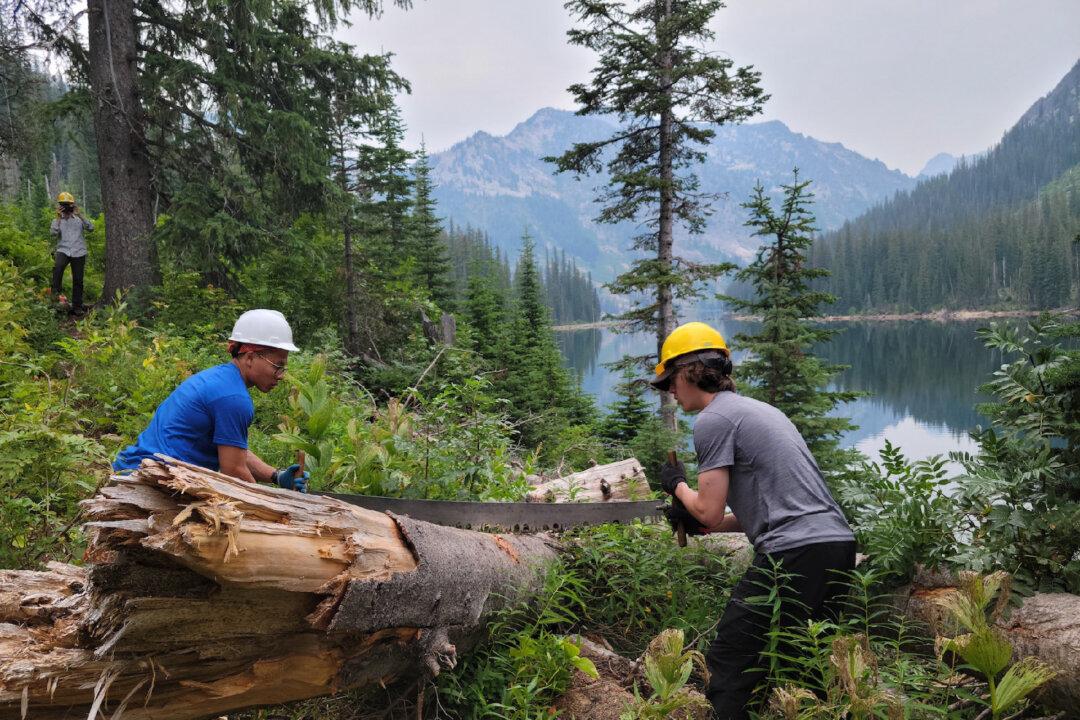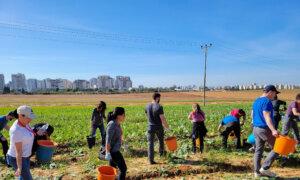Sixteen-year-old David Trone is learning to use a specially designed ax and a two-sided rake to clear foliage in a dense woodland. Nearby, Mary Beers, age 79, is patting down soil that soon will be a path for hikers and backpackers. These two are among people who volunteered to help reroute a section of a trail in the Natchez Trace State Park and Forest in Tennessee.
They’re working with other folks of various ages who also offered to donate their time and toil for a project sponsored by the American Hiking Society. That organization works to preserve trails and the areas surrounding them. The nonprofit enterprise is one among many that employ volunteers to help them achieve their goals. Activities in which unpaid helpers can participate around the United States and throughout the world range from maintaining historic buildings and taking part in conservation efforts to assisting scientists in conducting research and helping at-risk children.
As the American Hiking Society points out, “Trails don’t maintain themselves.” It urges those who enjoy the outdoors to “Give back to the trails you love, meet new people and enjoy the experience.” In addition to rerouting trials, other activities include clearing vegetation, planting trees and sprucing up around historic sites.
Maintaining historic structures also is a focus of those who enjoy volunteer vacations with the Bob Marshall Wilderness Foundation. They open trails, battle weeds and restore heavily used areas in a 1.5-million-acre area of Montana. Located in the northern Rocky Mountains along the Continental Divide, this primitive spread is the most ecologically complex complete mountain wilderness in the country.
The National Park Service gets into the act by inviting people to volunteer for periods ranging from a day to year-round. You can sign up on your own or with family and friends, and you can opt to work close to where you live or at a far-flung destination, including U.S. territories. Activities include supporting or leading education, serving as a campground host, monitoring animals and conducting research.
Investigation is an objective of other volunteer opportunities. Earthwatch connects scientists around the world with people who are passionate about the work they’re doing. In the granite mountains and craggy coastline of Acadia National Park in Maine, that means adding to more than 120 years of detailed observations to measure the impact of climate change on the abundant wildlife that lives in or migrates through the area. Supporters in the vast Amazonian forests of Peru help to develop conservation strategies intended to offset current weather patterns and ensure sustainability of indigenous monkeys, pink river dolphins and other residents of the land, rivers and sky.
Sea life and challenges to it occupy those who travel with the Oceanic Society. Since 1969, the group has worked to improve the health of the world’s oceans by addressing human behavior such as overfishing, pollution and activities that have a negative impact on the climate. Its worldwide marine research and conservation efforts include studying coral reefs, sea turtles and dolphins. In Indonesia, experts and their charges explore how plastic pollution affects the most biodiverse marine regions on earth.
Marine conservation is among more than 150 projects under the GVI USA umbrella that covers a wide choice of alternatives. They include animal care and health care, wildlife conservation and women’s empowerment, teaching English and renovating educational facilities. The company supports programs lasting from one week to six months and concentrates its efforts on some of the most vulnerable habitats on the planet.
People rather than places are the primary target of the Global Service Corps, whose volunteers live and work in the community they’re serving. For example, in Cambodia, their temporary home might be with a family, at an orphanage or in a Buddhist monastery.

Volunteers assist in training locals on public health issues, conducting youth leadership workshops and teaching basic English language classes. In turn, they receive a basic Khmer linguistic course, sightseeing trips to historically significant places and weekend excursions to UNESCO World Heritage Sites. After Russia’s invasion of Ukraine, based upon a survey of major needs, Global Service Corps instituted programs in conversational English for refugees from that beleaguered country.







